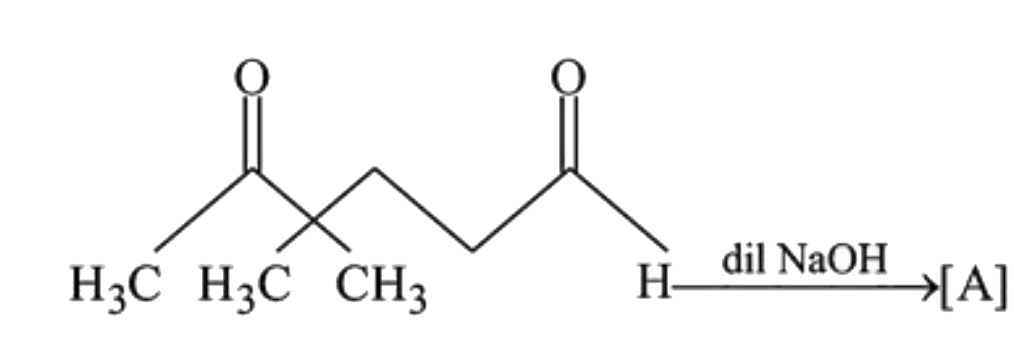BaC2+N2Δ−−→(A)CaC2+N2Δ−−→(B)
(A) and (B) are
BaCN2,CaCN2
Ba(CN)2,Ca(CN)2
Ba(CN)2,CaCN2
none of the above
The correct Answer is:C
To solve the question regarding the reactions of barium carbide (BaC₂) and calcium carbide (CaC₂) with nitrogen gas (N₂) upon heating, we will follow these steps:
Step 1: Identify the Reactants
The reactants given in the question are:
- Barium carbide (BaC₂)
- Calcium carbide (CaC₂)
- Nitrogen gas (N₂)
Step 2: Write the Reaction for Barium Carbide
When barium carbide (BaC₂) reacts with nitrogen gas (N₂) upon heating, the expected product is barium cyanide (Ba(CN)₂). The balanced reaction can be written as:
BaC2+N2Δ→Ba(CN)2
Step 3: Write the Reaction for Calcium Carbide
Similarly, when calcium carbide (CaC₂) reacts with nitrogen gas (N₂) upon heating, the expected product is calcium cyanide (Ca(CN)₂). The balanced reaction can be written as:
CaC2+N2Δ→Ca(CN)2
Step 4: Identify the Products
From the reactions:
- Product A from the reaction of BaC₂ is barium cyanide, represented as Ba(CN)₂.
- Product B from the reaction of CaC₂ is calcium cyanide, represented as Ca(CN)₂.
Final Answer
Thus, the final products are:
- (A) = Ba(CN)₂ (Barium cyanide)
- (B) = Ca(CN)₂ (Calcium cyanide)
---
The reactants given in the question are:
- Barium carbide (BaC₂)
- Calcium carbide (CaC₂)
- Nitrogen gas (N₂)
When barium carbide (BaC₂) reacts with nitrogen gas (N₂) upon heating, the expected product is barium cyanide (Ba(CN)₂). The balanced reaction can be written as:
BaC2+N2Δ→Ba(CN)2
Similarly, when calcium carbide (CaC₂) reacts with nitrogen gas (N₂) upon heating, the expected product is calcium cyanide (Ca(CN)₂). The balanced reaction can be written as:
CaC2+N2Δ→Ca(CN)2
From the reactions:
- Product A from the reaction of BaC₂ is barium cyanide, represented as Ba(CN)₂.
- Product B from the reaction of CaC₂ is calcium cyanide, represented as Ca(CN)₂.
Thus, the final products are:
- (A) = Ba(CN)₂ (Barium cyanide)
- (B) = Ca(CN)₂ (Calcium cyanide)
Similar Questions
In how many of the following reaction N2 gas may be released?
(a)NH3+CaOCl2→,(b)NH4NO3Δ−−→,(c)NH2CONH2+HNO2Δ−−→,(d)NH3+Cl2→,(e)NH4ClΔ−−→,
View SolutionIn how many of the following reactions N2 gas may be released
(a)NH4NO2Δ−−→(b)(NH4)2Cr2O7Δ−−→(c)NH2CONH2+HNO2Δ−−→(d)NH2CONH2+NaOBr→(e)NH3+Cl2(LR)→(f)NH3+Br2(LR)→(g)NH3+NaOCl→(h)NH3+CaOCl2→(i)Ba(N3)2Δ−−→
View SolutionBa(N3)2Δ−−→Ba+N2↑⏐⏐
View SolutionBa(N3)2Δ−−→Ba+N2↑⏐⏐
View SolutionFind the number of following reactions which are involved in roasting process :
(i) S8+8O2Δ−−→8SO2↑⏐⏐
(ii) P4+5O2Δ−−→P4O10↑⏐⏐
(iii) 4As+3O2Δ−−→2As2O3↑⏐⏐
(iv) 2ZnS+3O2Δ−−→2ZnO+2SO2↑⏐⏐
(v) ZnCO3Δ−−→4ZnO+CO2↑⏐⏐.
View SolutionOut of the following redox reactions
I. NH4NO3Δ−−→N2O+2H2O
II. NH4NO2Δ−−→N2+2H2O
III. PCl5Δ−−→PCl3+Cl2
disproportionation is not shown in
View SolutionFind the number of reaction from the given reaction which can show calcination process :
(i) CaCO3.MgCO3Δ−−→CaO+MgO+2CO2
(ii) CuCO3.Cu(OH)2Δ−−→2CuO+H2O+CO2
(iii) Al2O3.2H2OΔ−−→Al2O3+2H2O
(iv) 2Cu2S+3O2Δ−−→2Cu2O+2SO2.
View Solution Hdil NaOH−−−−→[A]H2O+−−−→Δ[B]
Hdil NaOH−−−−→[A]H2O+−−−→Δ[B]
View SolutionConsider the following reaction ,
C6H5NH2+CHCl3+KOHΔ−−→(A)H+/H2O−−−−−→(B)+(C)
The compounds (B) and (C) are :-
View SolutionCH3−C≡NH2O/Δ−−−−→(A)H2O/H+−−−−−→(B)(A)and(B) respectively are
View Solution
